The scientific formula for the perfect pancake – and why you should always use oil instead of butter
Making a pancake feels like it should be the easiest thing in the world.
But anyone who’s ever messed up their batter or cremated a crepe will tell you that getting through Pancake Day isn’t always easy.
Luckily for anyone braving the kitchen this Shrove Tuesday, professional help is now available.
MailOnline asked the experts what science says about the recipe for the perfect pancake.
And from the precise diameter of the perfect pancake to understanding your ‘baker’s ratio’: these handy tips will ensure that Pancake Day is a great success.
MailOnline asked experts what science says about the perfect pancake. By giving the batter the right consistency and using the right panning technique, you ensure that you get beautiful pancakes every time
The batter
Every good pancake starts with a good batter.
The basic ingredients are simple: flour, milk, eggs and whatever you want to use as flavoring.
But it’s the proportions and the way you combine these ingredients that determine whether your pancakes will flop.
Professor Ian Eames is a fluid mechanics expert from UCL who has spent more time than most thinking about the physics of pancake batter.
Professor Eames explained: ‘The characteristics of your pancake are determined by the baker’s ratio, which is an indication of how much liquid is in your mixture, and the thickness of your pancake.’
To calculate the baker’s ratio of your batter, divide the amount of milk in milliliters by the weight of the flour in grams and multiply by 100.
A lower baker’s ratio will result in a thicker batter, while a higher ratio will produce a thinner, more crepe-like batter.
Professor Eames measured the ratio and thickness of bakers’ pancakes from around the world to determine the exact ratio of batter to pancake.
According to Professor Eames, the ideal baker’s ratio for a thin British-style pancake is 100.
He explained: ‘Use 200 ml of milk, 100 grams of flour, one or two eggs and a pinch of salt.
‘The salt is a nice contrast to the sweetness if you go traditional with lemon and sugar.’
If you want a more American pancake, Professor Eames suggests 200 ml of milk, 200 grams of flour and two eggs.
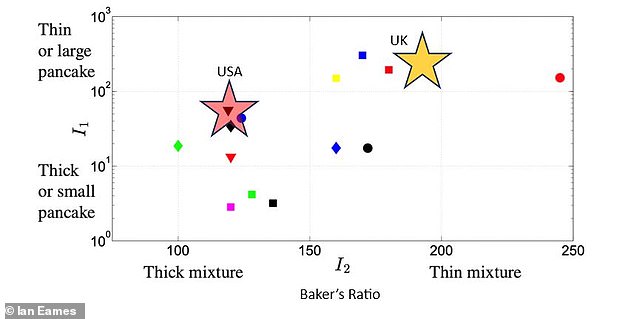
This diagram shows the relationship between the baker’s ratio, which is determined by the amount of milk, and the thickness and size of the pancake. The ideal British-style thin pancake (yellow star) has a baker’s ratio of about 200, while American-style pancakes (red star) have a baker’s ratio of just over 100.
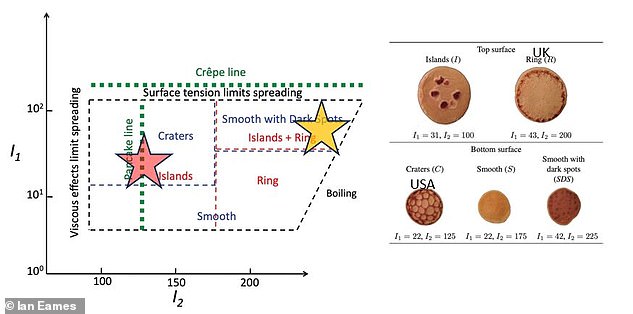
Research by Professor Eames has shown that the consistency of the batter determines how the pancake is cooked. For the ideal British pancake (yellow star) you want the top to have islands and a brown ring, while the bottom is smooth with dark spots
to blend
You may have heard that a lumpy batter makes for a more tender pancake.
And while it may sound like an excuse for laziness, there is some scientific truth to this.
When flour is mixed with wet ingredients, two proteins, glutenin and gliadin, combine to form long chains of gluten proteins.
But getting the right texture requires a trade-off: too much gluten and the pancake will be tough, while too little gluten and it will have no structure whatsoever.
As with kneading dough, over-mixing to remove all the lumps can create too much gluten and lead to a tough, rubbery pancake.
“I would always advise beating the batter with a fork so that you retain as much air as possible,” said Professor Eames.
This allows you to remove any lumps in the batter and develop gluten that can bind trapped air to keep the pancake light and tender without losing its structure.
If you want an even thinner crepe-like pancake, let your batter rest for 10 to 15 minutes after whisking.
This allows the gluten strands to relax while the protein chains untangle and the flour fully hydrates, leading to a thin, delicate pancake.
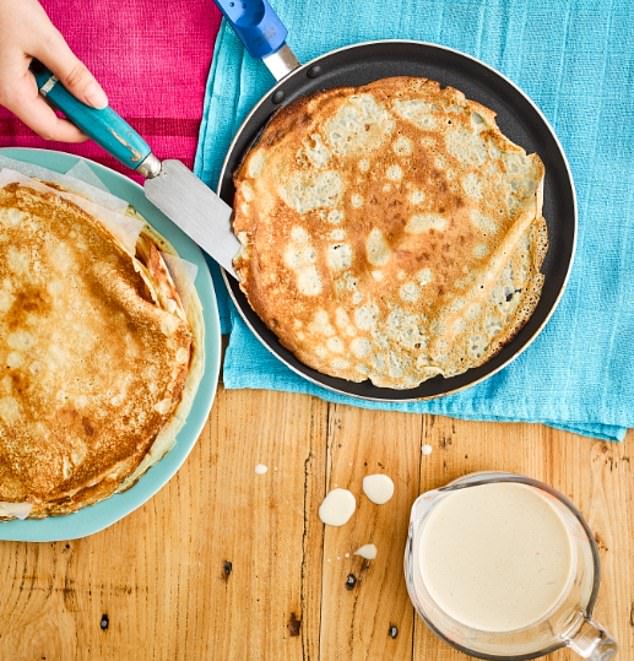
For fluffy, light pancakes, beat the batter until smooth with a fork and let it rest. This allows air to be incorporated into the gluten from the flour, but gives the proteins time to relax (stock image)
To cook
Of course, making the batter is only half the battle.
Professor Eames said: ‘Science tells you the link between the milk content of your pancake and its typical size. The higher the milk content, the thinner you should make your pancake.’
For a thin British-style pancake, Professor Eames recommends a diameter of about 15-20 cm to ensure even cooking.
For a thicker American pancake, he recommends looking for a diameter of about 10 cm.
To get that perfectly thin, crispy pancake, he suggests replacing the butter with vegetable oil.
Vegetable oil has a lower smoke point than butter, so it can get hotter without burning and spreads more easily throughout the pan, meaning better heat transfer to the pancake for more even cooking.
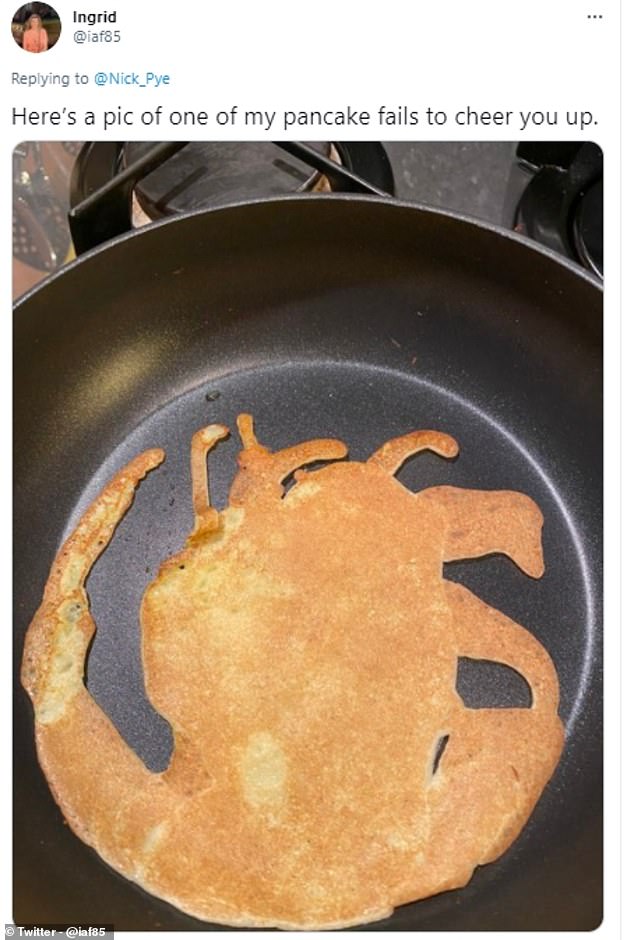
We’ve all felt the struggle to get a pancake perfectly round. Experts say the problem is that the batter is poured into the center of a flat pan and spread from there
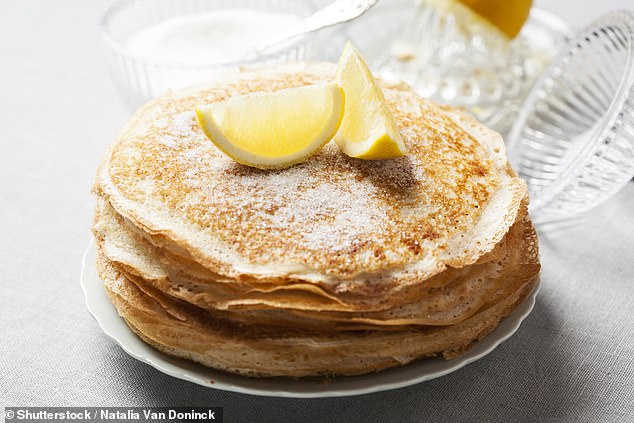
To get the perfect pancake every time, pour the batter into a steeply tilted pan and circle the pan so the batter can run around the perimeter. Slowly lower the tilt and rotate the circles until the pan is evenly covered (stock image)
That may be easier said than done, as the pancake batter seems to seize as soon as it hits the pan, rather than spreading in a neat circle.
But again, science has the answer.
Professor Mathieu Sellier, head of the Department of Mechanical Engineering at the University of Canterbury, has developed the optimal way to tilt the pan to ensure the batter is evenly distributed.
He said: ‘The problem is often that if the batter is placed in the center of the pan and the pan is left flat (horizontal), the batter quickly cooks and solidifies before it reaches the edge of the pan.
‘That’s why most people tend to tilt and turn the pan to speed up the spread – because of the steeper slope that a tilted pan provides, the flow speeds up.’
The problem is that as the hot pan transfers heat to the batter, it starts to behave less like a liquid and more like a solid.
If you try to spread the batter from the center, you will end up with uneven thickness and gaps.
To get around this problem, Professor Sellier and his co-authors have developed an algorithm that predicts the optimal way to tilt the pan, creating a perfect pancake every time.
The solution is to tilt the pan sharply in one direction as you pour the batter in, letting it run quickly to the edge of the pan.
Once all the batter has reached one edge, tilt the pan and rotate the pan in circular motions, running the batter around the entire circumference.
Then slowly lower the tilt while continuing the circular motion until you bring the pan flat again.
Now all you have to do is let it cook until it is brown on one side and just starting to cook before turning it over.
Unfortunately, your flipping technique is still something you’ll have to work out on your own.
